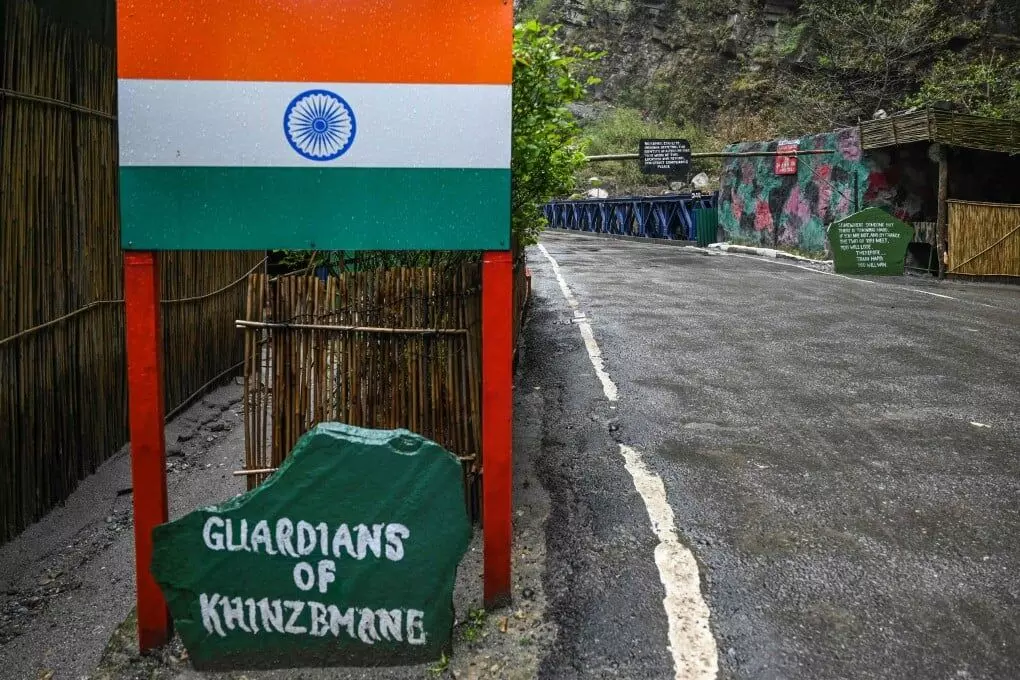India’s Tibet Card, China’s Northeast Card: Strategic Moves in a Changing Asian Chessboard

Historical Backdrop: Dalai Lama, India, and the Forgotten Dream
In 1959, the 14th Dalai Lama escaped Tibet during a failed uprising against Chinese rule and was granted asylum in India.
India allowed him to establish the Central Tibetan Administration (CTA) in Dharamshala — effectively a government-in-exile — and provided a safe haven for thousands of Tibetan refugees.
During the 1962 Sino-Indian War, India and the US covertly supported and trained Tibetan guerrillas, hoping they would serve as an armed resistance behind Chinese lines.
But over time — due to global geopolitics, India’s desire for stability with China, and the aging & assimilation of Tibetan refugees — the dream of a free Tibet largely faded.
Today, Tibetan exiles focus more on livelihood and cultural preservation than on independence. India maintains a low-profile Tibet policy, using it as leverage without crossing Beijing’s red lines.
---
🔷 China’s Counter: Northeast Militancy and Paresh Baruah
China has long suspected India of using the Dalai Lama and the Tibetan cause to pressure Beijing. In turn, some in India believe China subtly supports militant movements in India’s northeast as a counter-leverage.
The most prominent of these is Paresh Baruah, leader of ULFA-Independent, who advocates an independent Assam.
Based around the Myanmar–China border, Baruah and his cadre enjoy safe passage, access to arms through Southeast Asian networks, and likely some level of Chinese tolerance if not direct support.
While India has suppressed most insurgencies in the northeast through negotiations or force, ULFA(I) remains active, though weakened, partly because of its sanctuaries outside India’s borders.
---
🔷 India’s Strategic Messaging: Tawang, Kiren Rijiju, and the Tibet Link
Arunachal Pradesh, especially Tawang, is central to this rivalry:
Tawang Monastery is a key Tibetan Buddhist site.
China claims Arunachal as “South Tibet” — a claim India firmly rejects.
The 6th Dalai Lama was born in Tawang, and India sees it as a spiritual and territorial bulwark against Chinese claims.
Kiren Rijiju, a senior BJP leader from Arunachal, often speaks out on China and Tibet, reinforcing India’s claim and signaling solidarity with Tibetan Buddhists. His visibility in Dalai Lama-related events sends a quiet but clear message to Beijing.
---
🔷 Southeast Asia (SEA) Dynamics: The Wider Chessboard
The Myanmar–China borderlands are crucial for both ULFA(I) and broader India–China rivalry:
After Myanmar’s 2021 coup, the region became more unstable and porous, benefiting militant groups.
China’s influence over Myanmar’s junta gives it leverage over groups operating in Sagaing and Kachin states — where ULFA(I) maintains camps.
India has tried to deepen ties with ASEAN to counterbalance China, but instability in Myanmar complicates its Act East Policy.
The porous borders and illicit arms networks in SEA continue to fuel militancy in India’s northeast.
---
🔷 Strategic Implications & Future Scenarios
For India:
✅ Using the Dalai Lama and his spiritual authority as quiet pressure, while avoiding escalation.
✅ Strengthening control and development in Arunachal Pradesh and the northeast.
✅ Encouraging leaders like Rijiju to assert India’s claims culturally and politically.
✅ Managing Tibetan refugees carefully to maintain moral high ground without provoking China.
For China:
✅ Weakening India’s northeast through low-cost support to insurgents, maintaining pressure without overt conflict.
✅ Using its control over Tibet and its growing footprint in SEA to encircle India diplomatically and strategically.
✅ Pushing for international recognition of its version of the Dalai Lama succession.
---
🔷 Revival of ULFA(I): Why It Matters
ULFA(I)’s survival — despite decades of counterinsurgency — rests on its external sanctuaries and networks.
Any revival would depend on:
Continued instability in Myanmar.
Tolerance or tacit support from China.
Discontent among Assamese youth if socio-economic grievances grow.
For India, ensuring development and integration in Assam and sealing external sanctuaries are key to neutralizing ULFA(I) as a Chinese pawn.
---
🧭 Conclusion:
India and China continue to use indirect levers — Tibet and northeast militancy — as part of their strategic contest.
India’s deployment of figures like Kiren Rijiju and its quiet yet firm stance on Tibet signal it won’t cede ground easily.
At the same time, ULFA(I)’s persistence — rooted in SEA instability and China’s shadowy hand — reminds India that the northeast remains a live front in the broader India–China rivalry.
Going forward, India must balance:
Asserting its claims in Arunachal.
Supporting Tibetan culture and identity without destabilizing relations.
Disrupting the external networks that sustain ULFA(I).
Both countries may publicly downplay these issues — but in reality, the mountains, monasteries, and borderlands remain key pieces in the enduring Himalayan chess game.
